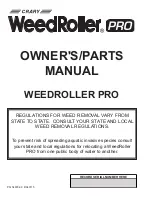
34
/
88
Driving with insufficiently se-
cured spare tire(s) can cause traf-
fic accidents.
Since tires are heavy parts, pay at-
tention to ergonomics and occu-
pational health and safety rules
during tire replacement. There is a risk of
pinching, falling, and cutting.
For whatever tire the spare tire
carrier is designed for, carry only
that type of tire in the carrier. Fol-
low the rules and regulations when remov-
ing/installing or maintaining the spare tire
or regarding the spare tire carrier.
3.9.1.
Crane Type Spare Wheel Hol-
der
Crane Type Spare Wheel Holder
Removing the spare wheel:
•
Remove the screws (2).
•
Mount the lever (3) and turn it coun-
terclockwise slowly. The spare wheel
will be lowered.
•
Remove the fixation parts (4) and take
the spare wheel.
Placing the spare wheel:
•
Mount the fixation parts (4) to the tire.
•
Lift the tire upwards by turning the
handwheel (3) clockwise.
•
Turn the lever (3) clockwise and the
tire will be lifted.
•
Mount the screws (2) and fix the tire.
•
Remove the lever (3) and store in the
toolbox or cabinet.
3.10. Mudguards
Your vehicle has mudguards and mats in ac-
cordance with legal regulations. This equip-
ment prevents water and similar substances
on the ground from splashing onto other vehi-
cles.
Some vehicles may have folding mats to pre-
vent the mat from rubbing against the ground
in the event of a crash.
Mudguards
Folding mats must be in the open
position while driving.
3.11. Mudguard with Sheet
The top of the rearmost mudguard can be co-
vered with a sheet metal for reinforcement pur-
poses.
3.12. Wheel Chock
There are two units wheel chocks and holders
in the vehicle.
The vehicle must be secured with
wheel chocks when parked on a
slope area, during the loading and
unloading operations or when parked with-
out a tractor.
Summary of Contents for SILO Series
Page 1: ......
Page 89: ...88 88...
















































